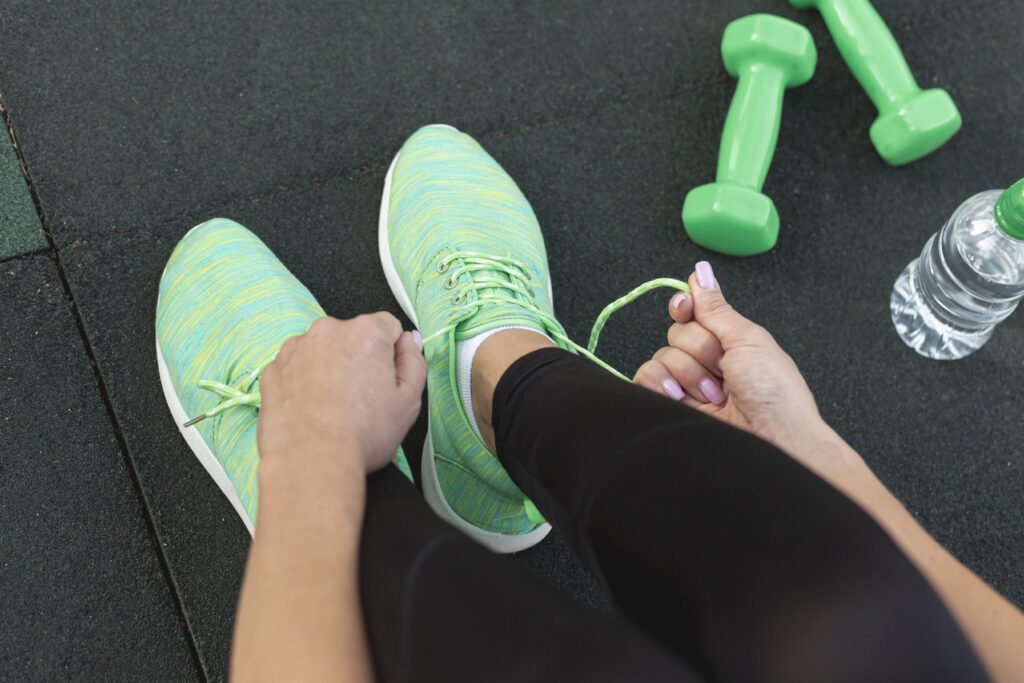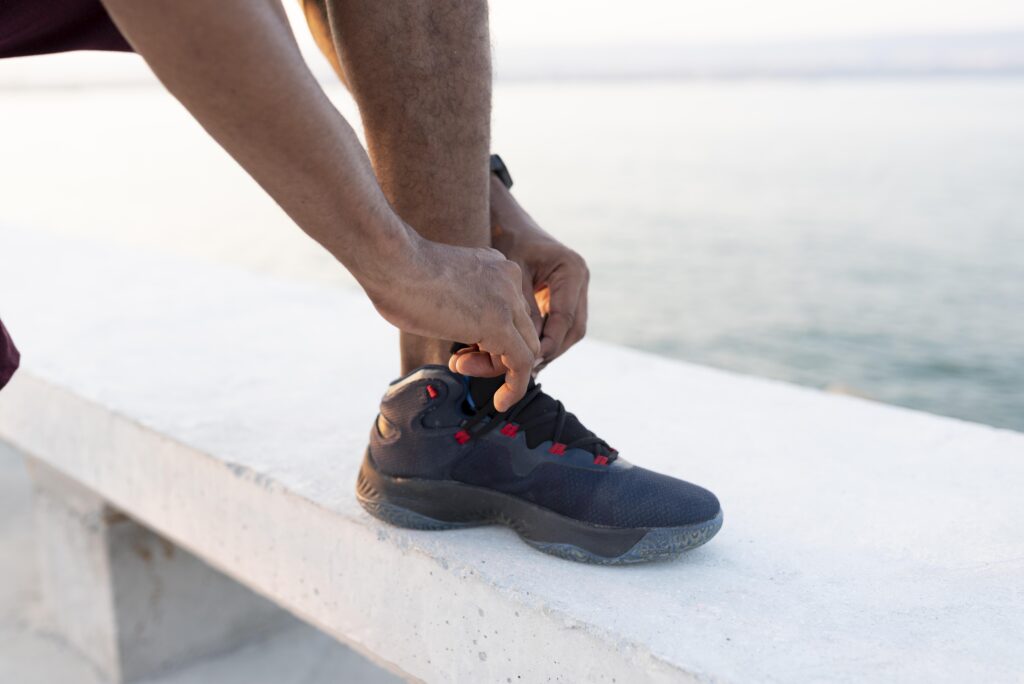We pay much attention to the primary flightless extremity it has certain functions that can affect one’s health. The impact is gravity creating strain on our feet given that the average person makes approximately 7,500 steps in a single day. From our stance and even the probability of being plagued by consistent pain, the shoes we put on our feet can significantly determine several aspects of foot health. This guide will outline the effects that footwear has on feet and then offer advice on how to avoid running into trouble and to select the right footwear.

Right Shoes for Your Feet | Healthy Steps
Understanding Foot Anatomy
For a person to comprehend how footwear influences foot health it is crucial that one takes time and learn about the foot structure. The human foot has 26 bones, 33 joints, and one hundred and over muscles, tendons, and ligaments. This complex architecture has provided support and the ability to fold and move around while walking, running, or doing other tasks.
Key Components of the Foot:
- Arches: The foot is divided into three main arches namely medial, lateral and transverse arch that bear its weight and absorbs pressure.
- Metatarsals: These five long bones are linked between toes and the midfoot and are involved in balancing as well as in pushing off.
- Tendons and Ligaments: These structures are as strong as well as ductile and are responsible to join bones and muscles together.
How Footwear Affects Foot Health
Footwear can either support or hinder foot function. Poorly designed shoes can lead to a variety of foot problems, including:
- Plantar Fasciitis: This common disorder occurs from straining of the plantar fascia, which is a thick tissue located near the bottom of the foot. Wrong shoes can worsen this condition and result in heel soreness and walking problems.
- Bunions: Although they are small bone extensions at the base of big toe, they can be unpleasant when pressed by tight shoes or shoes and can make it difficult for patients to wear any shoe at all.
- Flat Feet: Since the right shoes will not support the arches of your feet, you will likely end up developing flat feet which will cause discomfort in the arches, knees and even the hips.
- Metatarsalgia: This condition results in pain in the ball of the foot especially attributable to high heels or shoes that provide minimal shock absorption.
- Achilles Tendonitis: They cause the Achilles tendon to rub against the shoe, more so when the shoes are ill-fitting, they cause pains and stiffness.
Choosing the Right Shoes
When selecting shoes, it’s essential to consider factors that promote foot health. Here are some guidelines to help you choose the right footwear:
1. Know Your Foot Type
Understanding your foot type is the first step in selecting appropriate footwear. There are three main foot types:
- Neutral Arches: These feet are well arched in the middle and do not exert more pressure on any specific part of the feet.
- Flat Feet: Flat-footed people may need shoes that offer better arch support than other people.
- High Arches: People with high arches may require support and strong shock absorption.
You can determine your foot type by performing a simple wet test: wet your foot and step onto a piece of paper. The imprint will help you identify your arch type based on how much of your foot touches the paper.
2. Consider the Activity

Different activities require different types of footwear. Here’s a breakdown:
- Running Shoes: With the objective of propelling its users forward, this footwear gives support and shock absorption. This is where you should look for ones that are comfortable when worn and have a stretchy front sole and a good shock absorbing heel.
- Walking Shoes: these are slightly harder at the sole part and offer much more support than the running shoes do.
- Hiking Boots: Comfortable and robust, hiking boots have to provide adequate grip and extended ankle support on terrains.
- Dress Shoes: However, as far as it is possible, it is better to focus on the comfort: dress shoes with the soft insertions and enough arch support.
3. Fit and Comfort
When trying on shoes, ensure they fit well. Here are some tips for achieving the perfect fit:
- Try Shoes on Later in the Day: Feet usually gets swollen in the evening, so it will be more appropriate to put on the shoes after whenever possible.
- Leave Space for Your Toes: To be comfortable the shoe should fit leaving little space about a half inch between the longest toe and the end of the shoe.
- Walk Around: The other feature that should be tested is the shoe comfort when on various surfaces, floor types, or regions in general.
- Check for Width: Ensure that the shoe is not fitted tightly at the point of the widest end of your foot.
4. Look for Supportive Features
When choosing shoes, look for the following features that promote foot health:
- Arch Support: A good fit ensures the feet are aligned correctly hence there is no pain or discomfort each time you wear a shoe.
- Cushioning: Sufficient padding prevents stress on feet and additionally smooths the movements of the shoe.
- Breathability: Products with mesh upper parts allow the feet to breathe and do not get sweaty.
5. Avoid Certain Styles
While fashionable, some styles can be detrimental to foot health. Here are shoes to avoid:
- High Heels: These could change a body’s positions and also exerts abnormal pressures on the forefoot and lower back region.
- Pointed-Toe Shoes: These can compress the toes and cause disorders such as bunions and have general deformities.
- Flip-Flops: Though fairly easy to find and use, these shoes typically fail to provide sufficient arch support, and the added cushioning translates to woe for foot troubles.
Foot Health Maintenance
Choosing the right shoes is only one part of maintaining foot health. Regular foot care is equally important. Here are some practices to incorporate into your routine:
1. Regularly Inspect Your Feet
Check your feet for any changes, such as swelling, redness, or lesions. Early detection of issues can prevent more serious problems.
2. Keep Feet Clean and Dry
Wash your feet daily and dry them thoroughly, especially between the toes, to prevent fungal infections.
3. Moisturize
Use foot cream to keep the skin on your feet hydrated, preventing cracks and dryness.
4. Stretch and Strengthen
Incorporate foot and ankle exercises into your routine to improve flexibility and strength. Simple stretches, such as toe curls and calf raises, can be beneficial.
5. Rotate Your Shoes
Avoid wearing the same pair of shoes every day. Rotating footwear allows shoes to breathe and reduces wear and tear.
Special Considerations
Certain populations may need to pay extra attention to footwear choices:
1. Diabetics
Individuals with diabetes are at a higher risk for foot complications. Proper footwear is crucial to prevent blisters, sores, and infections. Look for shoes with extra depth and cushioning.
2. Athletes
Athletes should select sport-specific footwear that provides the necessary support and protection for their activities. Custom orthotics may also be beneficial for those with specific foot issues.
3. Seniors
As we age, our feet may change shape, leading to discomfort. Seniors should prioritize comfort, support, and stability in their footwear choices.
The Role of Orthotics
Sometimes, physiotherapy or available counters purchased in a store or ordered by a particular model of orthopedic insoles can give additional support and get rid of foot pain. That is why such inserts can be useful for leveling the pressure and aligning the foot and the shoe. Go to a podiatrist if you can get orthotics for your specific situation or not.
